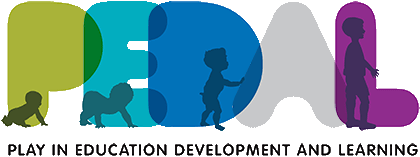What is anxiety?
Anxiety is a word that floods news headlines, books, and podcasts but can be hard to define. There is not a widely accepted definition of anxiety. This might be because being anxious can be hard to explain in words outside of sensations (fast heartbeat, sweaty, stomach ache, fidgety hands or legs), or other feeling words such as worried, concerned, nervous.
Anxiety is rooted in fear. Our bodies are designed to respond in certain ways to fear in order to keep us safe. Anxiety activates parts of our brains and nervous system that have historically been there to help us avoid danger (think fight-flight-freeze). Anxiety makes us feel the same way we would if we were in danger, irrespective of the lever of actual risks facing us. Children and adults with consistent feelings of anxiety can be thought of as having a brain that sometimes views the environment as being more dangerous or scary than it is.
Play and movement can help our bodies to recognise we are safe and reduce our anxiety level. The following four examples are playful ways that adults and children can address feelings of anxiety.
Activities for Anxiety (All Ages)
Rhythmic two-person activities: Tossing, rolling, kicking a ball back and forth, cuddles where the child can hear your heartbeat and feel your breathing pattern, tic-tac-toe, a few rounds of ‘Simon Says’
These activities play on research around mirroring – matching someone’s speech, attitudes or movements – which helps the brain move away from the fight-flight-freeze response.
Puzzles or solvable games
Encourage your child to do an activity that will promote a sense of accomplishment or confidence, such as solving a puzzle, colouring in a colouring book, making a snack for themselves, or building a castle/house.
Consistent feelings of anxiety can lead to a child feeling out of control or incapable of handling the world around them. These playful activities promote confidence and a feeling of completion or solvability, which can be reassuring.
Creating a board game
This activity can be particularly useful for children who have a hard time adjusting to routine changes (i.e. the transition back into a new school term, or a new schedule between co-parents).
Draw out an empty board game on a piece of paper, a whiteboard or make one digitally. Sit down with the children/children and create a step-by-step board game for each part of a routine. This could be a daily schedule to encompass the whole day, or for a part of a routine that is hard for the child (e.g. bedtime). Allow the child to colour or draw pictures on the board and make it their own – including a game piece that they can move around at every step.
Again, we are working toward safety and a perceived lack of danger.
Making a playlist
This can take many different forms, you can choose what works for you and your child!
Have your child make a playlist of their favourite songs to dance to – moving the body helps send the brain signals that the body is safe and not in danger.
Have your child listen to a few songs with different tempos and have them decide which works best to help them feel less anxious. You can then create a playlist of songs which use only that tempo. This can allow the child to check in with their heartbeat or breathing – noticing sensations can help us identify our emotions more clearly.
Have your child make a playlist with song titles that talk to their anxiety. It can function like a long message between all the song titles or each one can stand alone. This activity is ideal for older children.
–
These are some jumping off points for playful activities for anxiety, and not each or every one will work for your child, family or circumstance. That’s okay!
It’s also important to remember that what works for your child at one age may not work later on, and being able to cope or regulate through feelings of anxiety takes practice and flexibility! The mindset of playfully engaging is often what is most important.
*Please note: There’s an important distinction to be made between anxiety vs anxiety disorders.
Anxiety is part of the human experience for us all. It is important for your child to experience anxiety and the subsequent emotions around the ability to work through it on the occasions it shows up.
Anxiety disorders refer to a diagnosis given by a mental health professional for chronic and pervasive levels of anxiety that affect a person’s daily life.
For more information on anxiety, explore the resources below.

Useful links
- Young Minds: Supporting your child with anxiety
- Child Mind Institute: Anxiety

